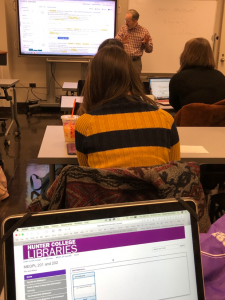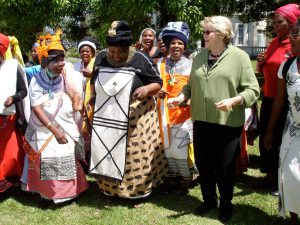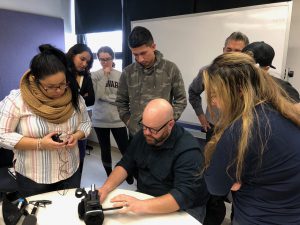Hunter College librarian Tony Doyle met with Professor Sissel McCarthy’s MEDPL 202 Reporting and Writing 2 students on Feb. 28 to take them through all the research tools and resources available to them at their fingertips.
The students are working on their first assignment and looking for data and statistics to add credibility to their stories. Some of their ideas include the anxiety epidemic among Gen Z students, the congestion pricing proposal to reduce traffic in Manhattan, the popularity of K-Pop and inclusivity in the cosmetic products.
Doyle told students the top three databases are ProQuest, EBSCO, and Nexis Uni, with Nexis Uni being the most difficult but best one to use for their purposes. “A sophisticated topic deserves a sophisticated search,” said Doyle as he shared his pro-tips with students.
Among them:
- Limit your search terms to a single word or short phrase
- Start with a general word and then go for more specific terms
- Narrow down those results by going to the keyword list and clicking on the word or phrase you want to see in the first 100 words the article
- If you’re looking for statistics, add “numbers or statistics or data” to your search terms
- Look at the most recent stories by adjusting the date slider




